When you visit a country where the written language is as foreign as can be, finding anything to eat can be a challenge. Communication barriers can make it difficult to order the simplest of foods or can even lead you astray, resulting in a dish a little too foreign to your palate. During my week-long visit to Seoul, I was fortunate to have a group of native Koreans guide me through their country’s cuisine. Lucky for me, every one of them believed that the best way to get to know a country was to dive into its kitchens!
Most Korean restaurants feature tables with a BBQ in the center, meaning you can opt to cook your meat at the table. You may or may not be sitting on the floor as well. If you do choose to go the traditional route and cook at the table, be forewarned that you’ll likely end up leaving with a smoky smell in your hair.
Typical Foods (in others words: must know!)
A lot of the following foods have been Americanized, so you don’t even need to leave the US to get a taste of them.
Kimchi – If you’re at all familiar with Korean food, you’ll definitely know kimchi by its name and distinctive odor. Kimchi is a dish of fermented vegetables, such as napa cabbage, radish, or cucumber. It is typically doused in a spicy red sauce, but there are variations of kimchi that don’t have a spicy kick. When you order at any Korean food restaurant, you traditionally receive several small plates of banchan (side dishes), one of which will be kimchi. Other variations of kimchi include kimchi soup and kimchi fried rice.
Bibimbap – One of the most easily stomached dishes among foreigners is bibimbap, a signature Korean dish consisting of white rice, namul (steamed vegetables), gochujang (chili pepper paste), and protein in the form of a fried egg or sliced beef. A dish very similar to bibimbap is dolsot, which is bibimbap served in a sizzling hot stone bowl.
Kalbi (or Galbi) – Kalbi is a type of grilled marinated meat, typically beef short ribs, although pork is sometimes used as well. Before grilling, the short ribs are marinated in a delicious soy sauce-based recipe, giving the meat a slightly sweet flavor. Kalbi can be served pre-cooked, or in Korean BBQ restaurants, a whole slab of short ribs will be cooked right in front of you.
Soju – Soju is actually a beverage, and if you have any Korean friends, chances are you’ve been under the influence of soju before. A distilled beverage typically made of rice, soju tastes like a watered down vodka, although it is slightly sweeter. Don’t let its tame after taste fool you–a few shots of soju will hit you much harder than you think!
Kimbap (or gimbap) – This is the Korean form of futomaki, Japanese sushi. Kimbap is steamed rice rolled in seaweed paper (kim or gim), traditionally filled with pickled vegetables and protein in the form of cooked egg or beef. This dish is served in sliced rolls and has no spice to it, as wasabi is not traditionally added to Korean food.
Slightly Unusual Dishes
Naengmyeon – If you thought Spanish gazpacho is the only yummy cold soup out there, think again! Naengmyeon is a Korean noodle dish consisting of buckwheat noodles, vegetables, and either beef or an egg. It is served in a stainless steel bowl and filled with tangy icy cold broth. The cold temperature slightly dulls the flavor, but makes it absolutely delicious on a warm day. A variation of this dish is bibim naengmyeon which features the key ingredients slathered with a spicy red chili paste dressing rather than broth.
Hongeo hoe – While the Japanese call raw fish sashimi, Koreans call it hoe. A traditional Korean hoe dish is also one to be wary of, as it is definitely an acquired taste. Hongeo hoe is fermented skate fish that looks harmless enough until you realize why the skate fish is special. Skates, like sharks, secrete their uric acid (read: urine) through their skin, resulting in meat that is very pungent. Within seconds of the hongeo hitting your taste buds, your gag reflex will likely kick in as its strong alcoholic flavors seep in and your nasal paths flush like the after effects of eating wasabi. It’s a strangely natural occurrence that’s worth trying, but probably not going to end up on your favorite foods list.
Street Foods
Ddeokbokki – Those familiar with Japanese cuisine will know of mochi, a rice cake made of glutinous rice. The Korean version is known as ddeok, and it usually takes a thick, long tubular form. Ddeokbokki is a popular Korean dish often served by street vendors. It features slices of ddeok and meat swimming in a red chili sauce. Hot, savory, and slightly messy, this is the perfect quick treat on the streets!
Mandu – Nearly every Asian cuisine features a form of dumplings, and in the case of Korea, theirs take the form of mandu. Fried or grilled dumplings are known as gunmandu, while boiled dumplings are mulmandu. All forms typically have a meat or vegetable filling and are served with a soy sauce and vinegar dipping sauce.
Sundae or soondae – If you order sundae in Korea, don’t expect a bowl of ice cream. Instead, you’ll receive the Korean form of blood sausage with a casing made of boiled or steamed cow intestines, stuffed with ingredients such as noodles, veggies, or seafood. Sundae is typically served along with ddeokbokki by street vendors, and it actually quite tasty.
Bungeoppang – Korean dessert typically takes the form of fresh fruit (ie. Korean pears or oranges) or a pastry filled with sweet red bean paste. A typical Korean sweet that can be found on the street or a convenience store is bungeoppang, a pastry consisting of a chewy sweet dough that is cooked in what appears to be a waffle iron. The batter takes a fish-shaped mold, and is filled with sweet red bean paste and sometimes ice cream.
*All photos taken by me, unless otherwise noted.
Suzi Pratt is a Seattle event, food, and travel photographer available for hire. She is also a contributing writer at Digital Photography School and runs a blog teaching others how to start a photography business.

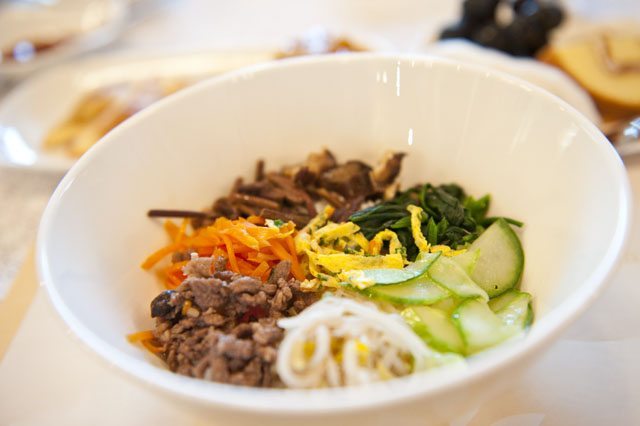
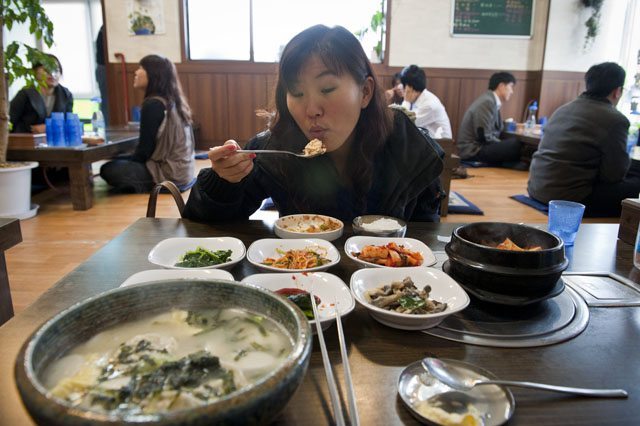


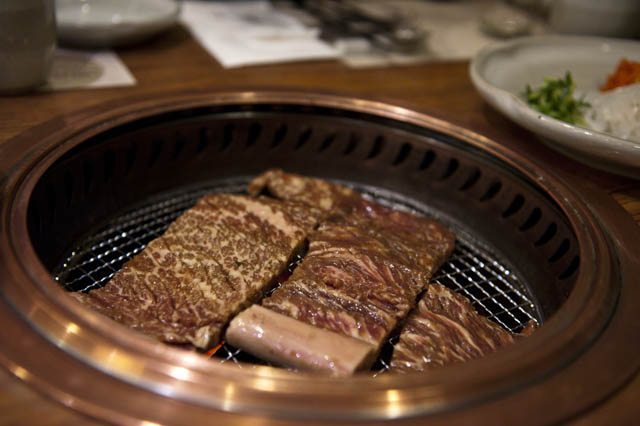
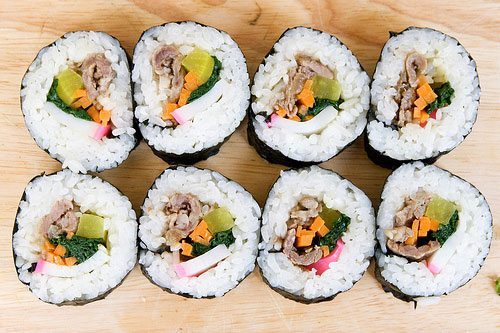

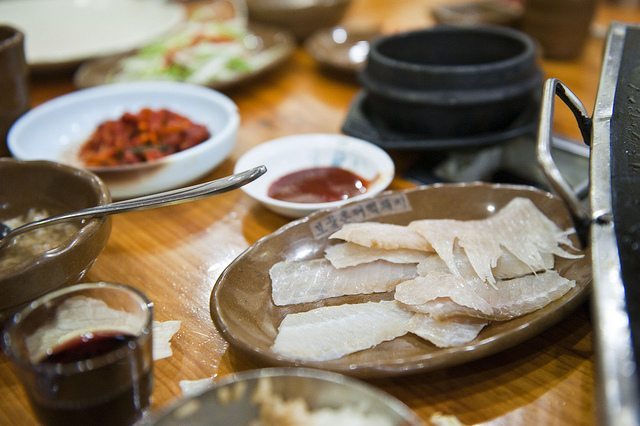
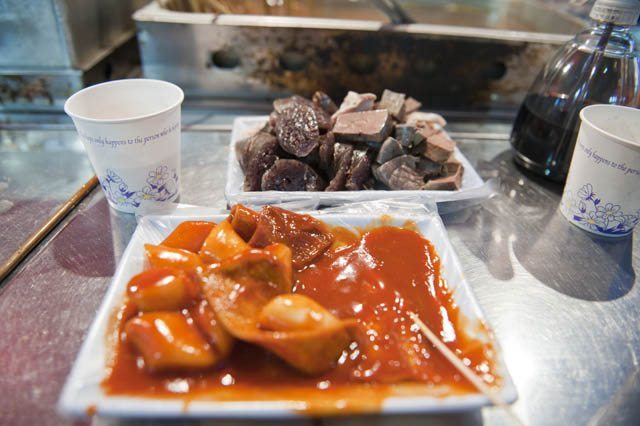

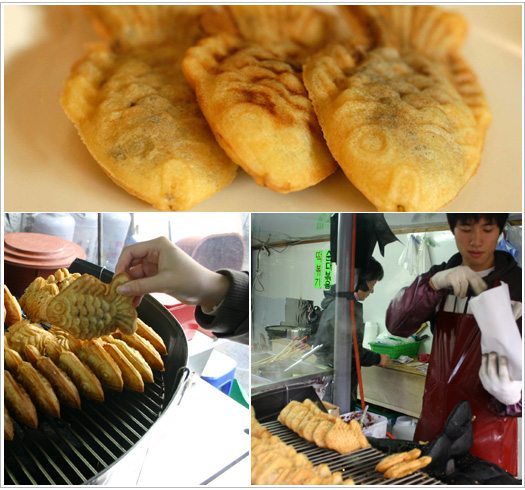



http://www.differencebetween.net/miscellaneous/difference-between-urea-and-uric-acid/ http://www7.taosnet.com/platinum/data/light/species/skate.html
Skates excrete urea, not uric acid!